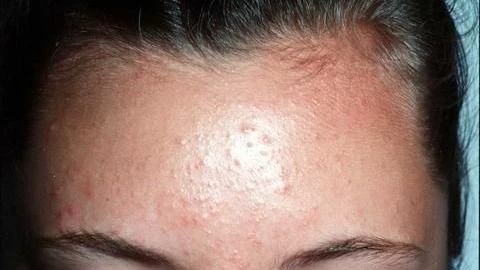Forehead acne, a common yet stubborn issue, can be challenging to manage. Typically found around the hairline and temples, it can be triggered by various factors such as hormones, stress, and dandruff.
This type of acne not only affects appearance but can also lead to low self-esteem, itching, and irritation. If your forehead acne isn’t improving despite treatment efforts, you might be overlooking some common culprits.
Tight hair bands
Wearing tight hair bands can exacerbate acne. The friction from the bands irritates the skin, leading to increased oil production and more acne. Additionally, tight hair bands can trap moisture and sweat against the skin, creating a humid environment perfect for acne-causing bacteria. Dirty hair bands further aggravate the issue by trapping dirt and bacteria, contributing to persistent forehead acne.
Hair oils
Applying hair oils at bedtime can worsen forehead acne. Oils can trickle onto your forehead and clog pores overnight. Hair sprays containing oils, silicon, or other pore-clogging substances can also transfer to your skin, leading to breakouts. To prevent this, avoid letting hair products come into contact with your forehead.
Hats, caps, and helmets
Wearing hats, caps, and helmets can lead to forehead acne due to the sweat and heat they generate. The friction caused by these accessories can also irritate the skin, promoting acne formation. To minimize this risk, ensure these items are clean and fit properly to reduce friction and sweat buildup.
Dandruff
Dandruff is a common contributor to forehead acne. The yeast Malassezia furfur, which causes dandruff, can infect the forehead and lead to fungal acne. Managing dandruff effectively with appropriate shampoos and treatments can help reduce forehead acne.
Addressing these factors can significantly improve your efforts to clear forehead acne. By being mindful of hair accessories, hair products, and managing dandruff, you can create a healthier environment for your skin and reduce the occurrence of acne on your forehead.


